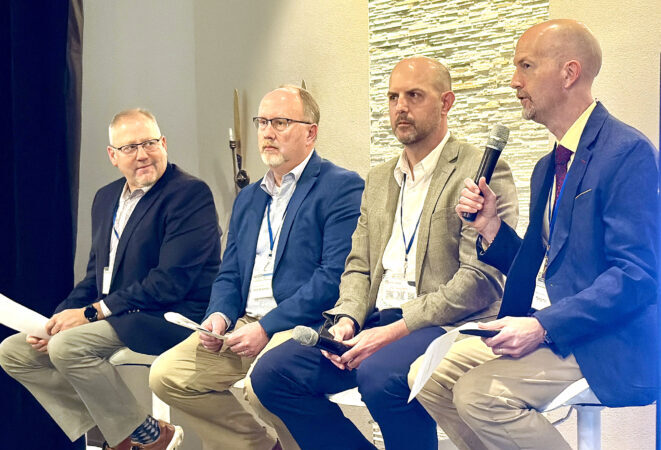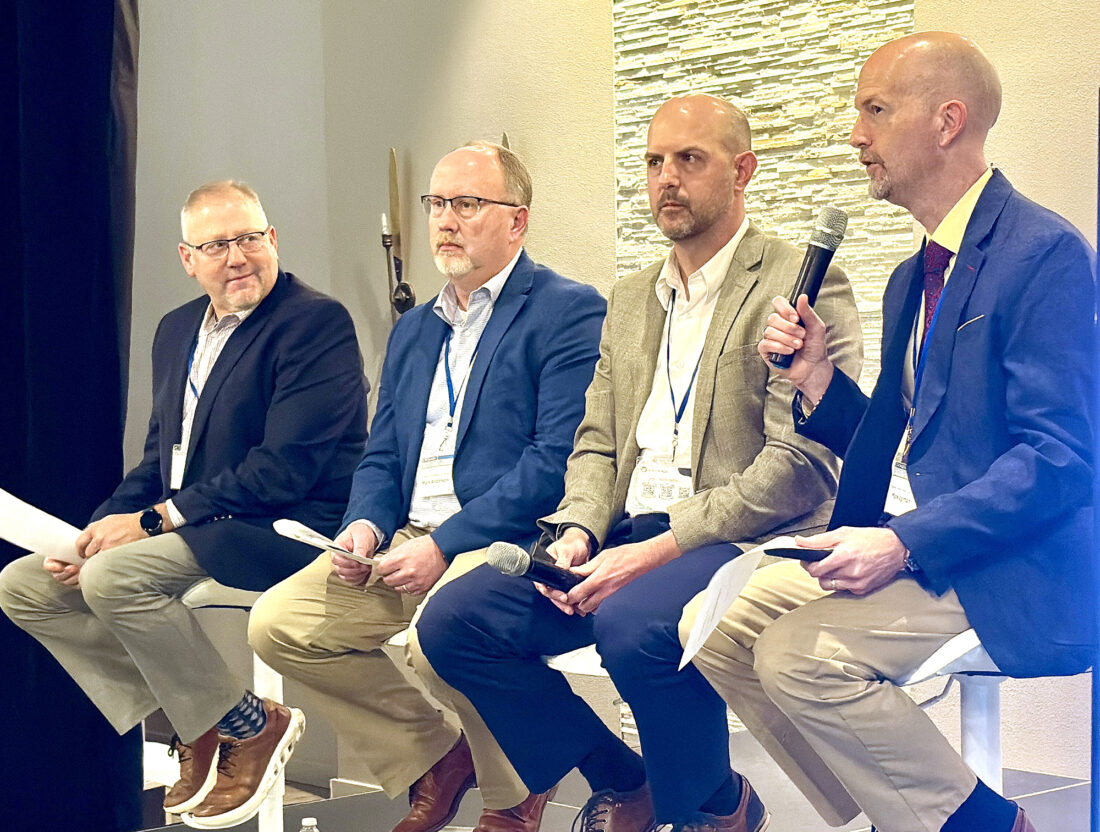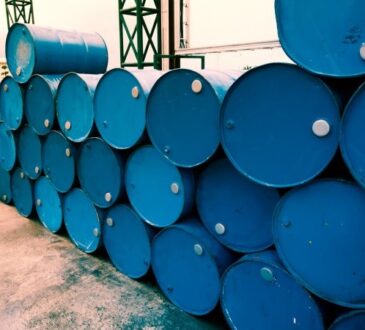

Jill Schramm/MDN
Mark Lyman, economic developer with Minot Area Chamber EDC, right, poses a question as moderator for a panel of natural gas and pipeline industry experts, from left, Larry Oswald, MDU-Great Plains Natural Gas; Mark Anderson, WBI Energy; and Justin Kringstad, North Dakota Pipeline Authority.
A proposed pipeline to bring natural gas from the Bakken across North Dakota has the potential to accelerate industrial development while providing a new energy option for more communities, according to industry experts at the Economic Development Association of North Dakota conference taking place in Minot this week.
Mark Anderson, vice president of Business Development and Marketing with WBI Energy, said with the support of the state and a large group of potential customers, WBI hopes in the second quarter of 2026 to have a proposed natural gas pipeline from the Bakken to eastern North Dakota actively moving toward reality.
“As an indication of our level of optimism, we’ve had a very large team working on this project. Over the course of this entire year, we’ve been working with landowners all across that route, thousands of them. We’ve had good engagement from landowners. We have teams out doing a whole variety of survey work across the entire route,” he said during a Wednesday, Oct. 8, panel discussion. “We’re doing a lot, We’re spending a lot of money – if that’s any indication of our level of belief that this product is going to happen.”
The pipeline would run north on U.S. Highway 83 to Minot and south to Bismarck and extend east to branch out from Fargo as well as extend north near Jamestown into northeastern North Dakota.
In addition, WBI is working on a Minot Industrial Pipeline that would serve Minot Area Chamber EDC’s industrial park. The 87 miles of 20-inch pipe would carry 250,000 thousand cubic feet per day MCFD).
Anderson said surveying has begun and work is ongoing behind the scenes.
Mark Lyman, economic developer with MACEDC, said companies are looking for land, water and energy, and the industrial park can supply the first two. Natural gas access falls short of the huge quantities some industrial users are requiring, though.
“It’s fair to say that these large industrial projects or large value-added ag projects don’t happen without large-scale natural gas,” Lyman said. “Without that you don’t attract that transformative industrial user. You can attract a $10 million or a $50 million project with smaller natural gas. You don’t attract a billion dollar project without large-scale natural gas. … Which is why a 20-inch or 24-inch pipeline coming right down from Tioga into Minot is a massive gamechanger for the industry.”
A pipeline into Minot also would create opportunities for area communities that have been too far away from natural gas supplies to access or afford the service to take another look, he said.
It’s not too soon for interested communities to get on the radar of natural gas distributors, said conference panelist Larry Oswald, director of Business Development and Energy Services with Montana-Dakota Utilities Co. and Great Plains Natural Gas, a division of MDU. Panelists also encouraged communities eyeing industrial projects down the road to talk with natural gas suppliers now to ensure having the right infrastructure in place.
Justin Kringstad, executive director with the North Dakota Pipeline Authority, said North Dakota has potential to be a shipper on the WBI system as it seeks to help secure the project. The Legislature has committed $50 million a year for up to 10 years through the Bank of North Dakota and has given the pipeline authority authority to sign up for about 15-17% of the project’s volume, roughly a billion cubic feet per day. The state’s participation would serve as a bridge to assist the startup but not continue long-term, Kringstad said.
“As other projects get developed in the state of North Dakota, we release our capacity, our obligation, to other partners,” he said. “As quickly as we work to get that capacity, we’re going to be moving quickly in the opposite direction to get rid of that capacity.”
He also noted that without solutions for the large quantities of natural gas produced in the Bakken, the associated oil production will be forced downward, eventually impacting state coffers.
“So, the rate of return on $50 million that the state is committing to this pales in comparison to the upside of keeping that sector healthy,” Kringstad said.
Anderson said WBI’s intent is to make an initial filing with the Federal Energy Regulatory Commission late this year and submit the major filing in mid-2026. That permitting process on the federal, state and local levels would be expected to play out through mid-2028, when construction would begin.
He said service to the western segment is projected to start in November 2029, based on timeline estimates. The balance of the project extending east would be completed by November 2030. The Minot Industrial Pipeline also would come on line in late 2029.
Anderson suggested WBI won’t stop after completing the project if there’s still other demand to be met in the state.
“We want to ensure natural gas is not an impediment to community growth, economic development, all throughout the state,” he said. “(When) we build a project, it’s a heavy lift. It’s costly. It’s time-consuming. So, we want to design these systems to not just support that demand in the 2029-2030 timeframe. We want to design these systems so they can be expanded vertically to support long-term growth.”




